Earlier in the year, I was called upon by the P.P.O.W Gallery in New York City to refresh Hunter Reynolds’ Memorial Dress for an exhibit in London. It was a profound experience and interesting work. I wrote about the process in “Restoring the Memorial Dress by Hunter Reynolds.”
As it turns out, the gallery needed me to refresh another of Hunter’s gowns. This one is called the Love Dress.

This gown is half pink, half baby blue, and the pattern on the fabric is actually Hunter’s writings. It took him five months to detail handwritten accounts of love onto the dress in a stream-of-consciousness fashion. Note that the text reads across the skirt’s center-front seam.

Replacing the hoops and repairing the bodice
The dress was delivered to me stuffed in a cardboard box. The original hoops and petticoats had gone missing, everything was terribly wrinkled, and the bodice needed a few repairs. I thought it would be a simple task to order new hoops, but one thing I didn’t account for–Hunter is extremely tall. The dress measurement from waist to hem was 54 inches.
You can see that the bottom hoop of the replacement set I had purchased landed about 18 inches from the floor.
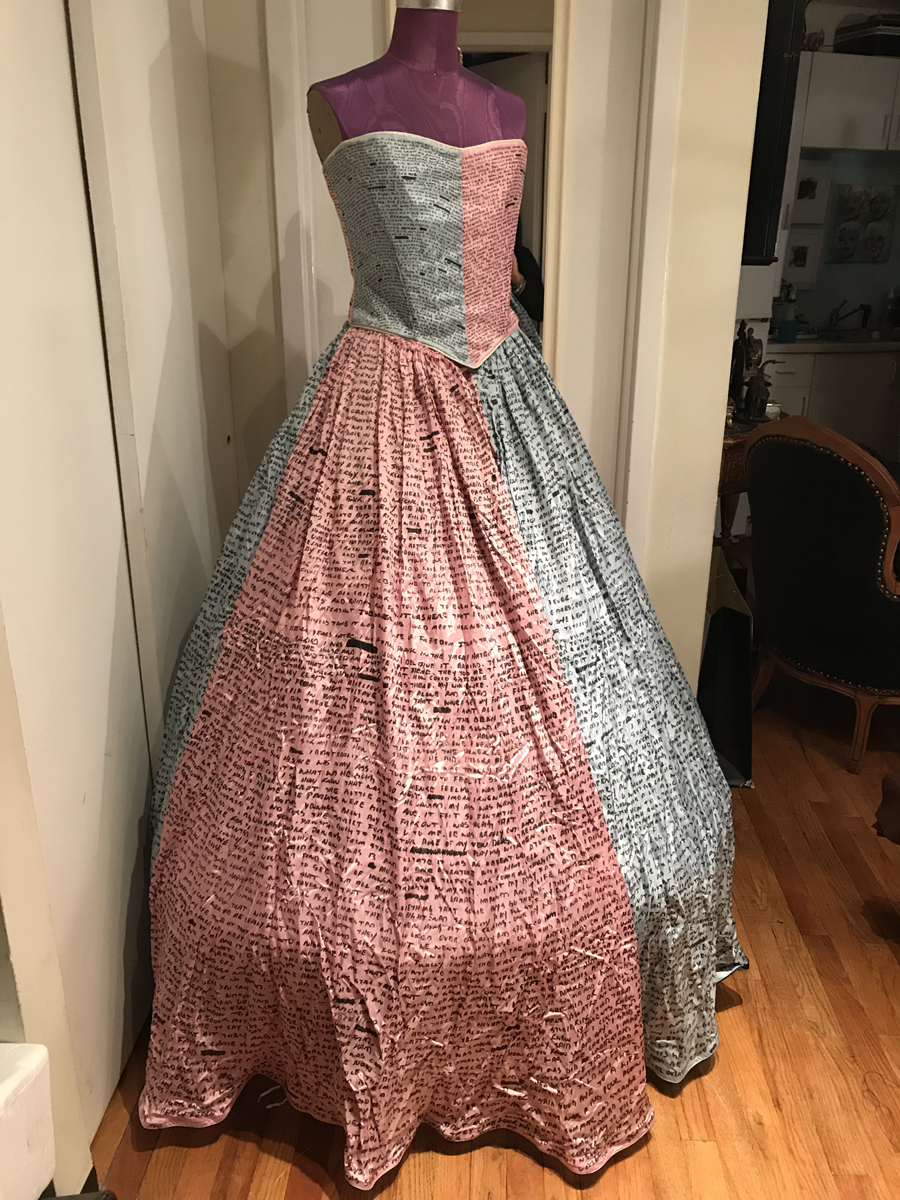
This required me to construct a new hoop skirt, recycling the steel hoops from the purchased one.
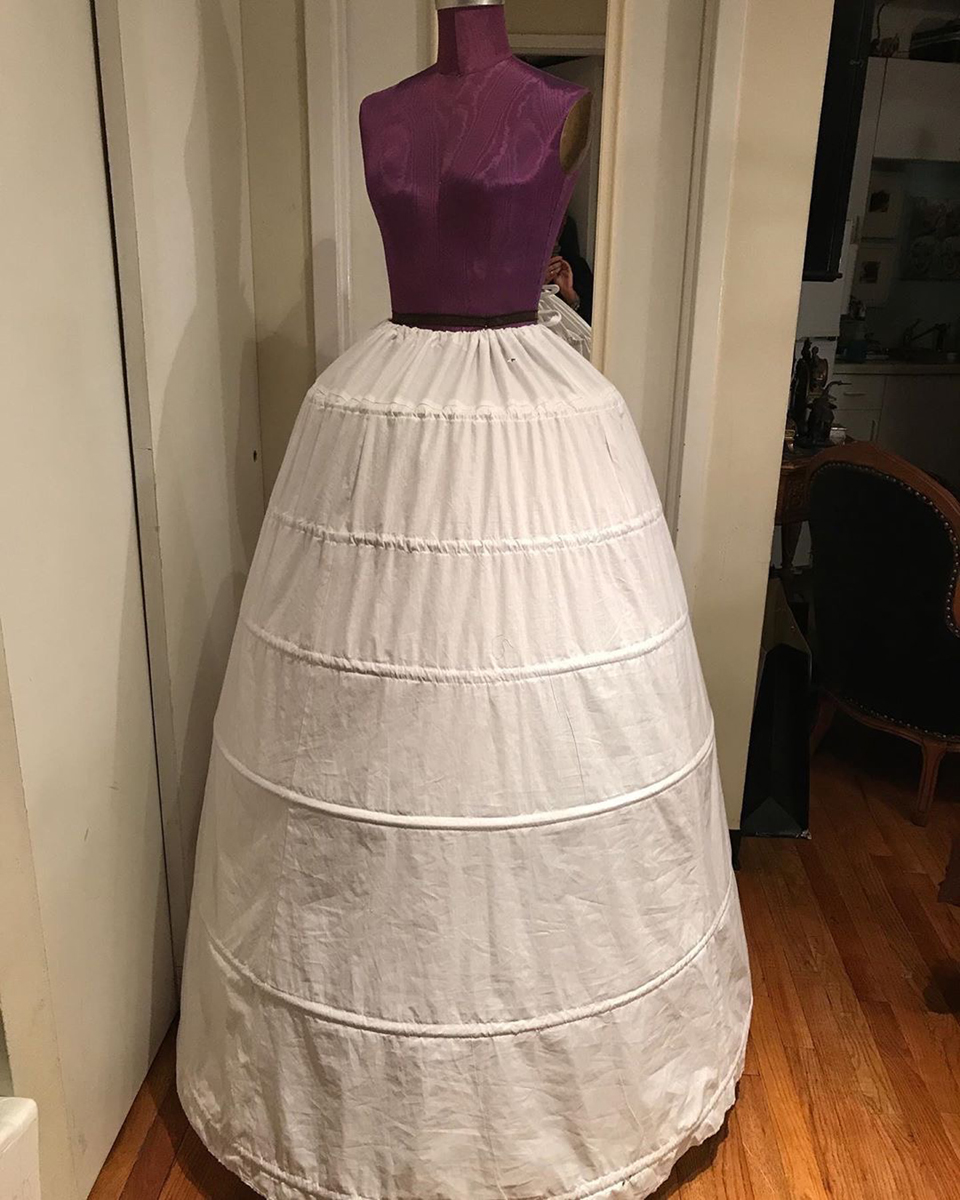
After trying on the hoops under the dress, I decided it gave the proper silhouette.

I needed to make only minor repairs to the bodice, which was beautifully made. I had to cut the elastic that joined the bodice to the skirt, to remove the skirt for pressing.
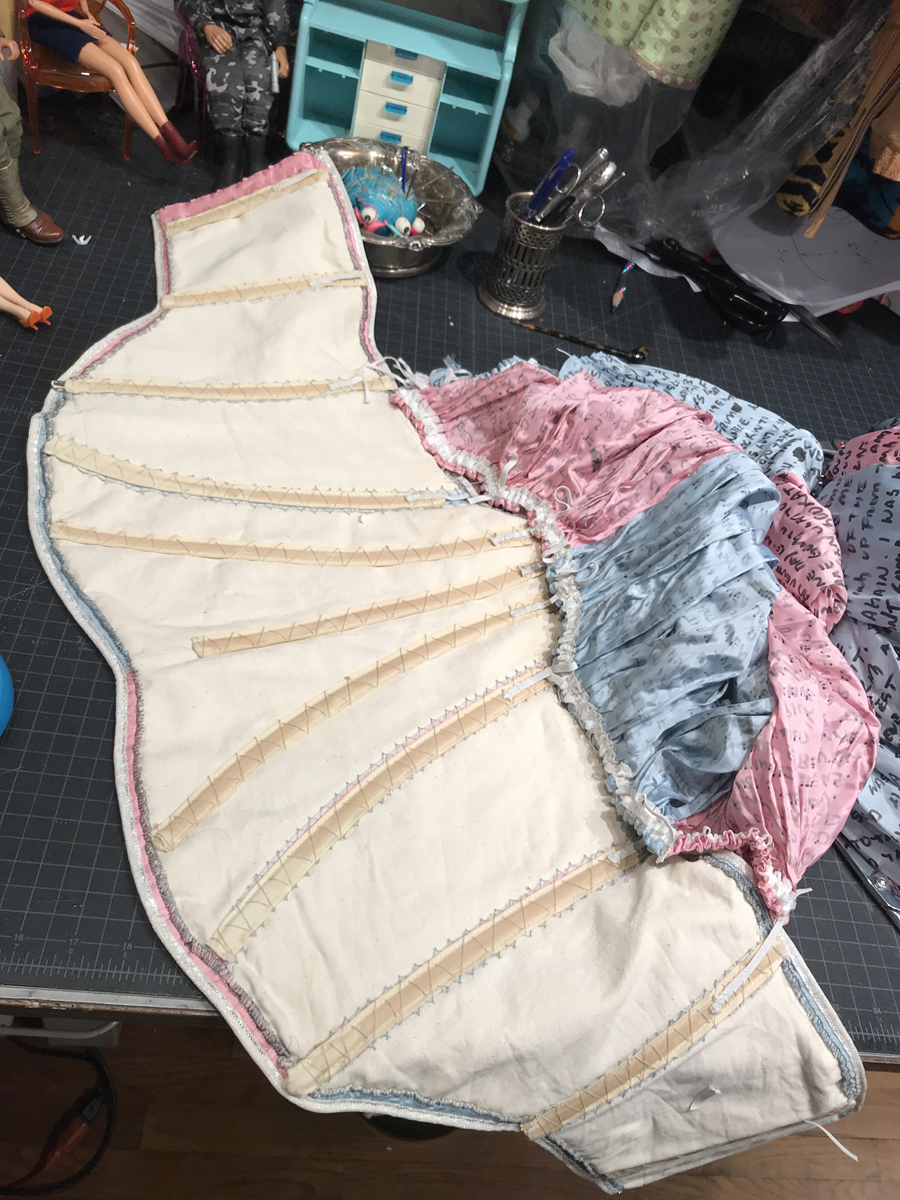
The elastic that joined the skirt to the bodice had deteriorated, so I replaced it with new. It is a customary join for these kinds of clothes, as the elastic gives a little range of motion between the two pieces.
After pressing the skirt, I rejoined the two pieces.
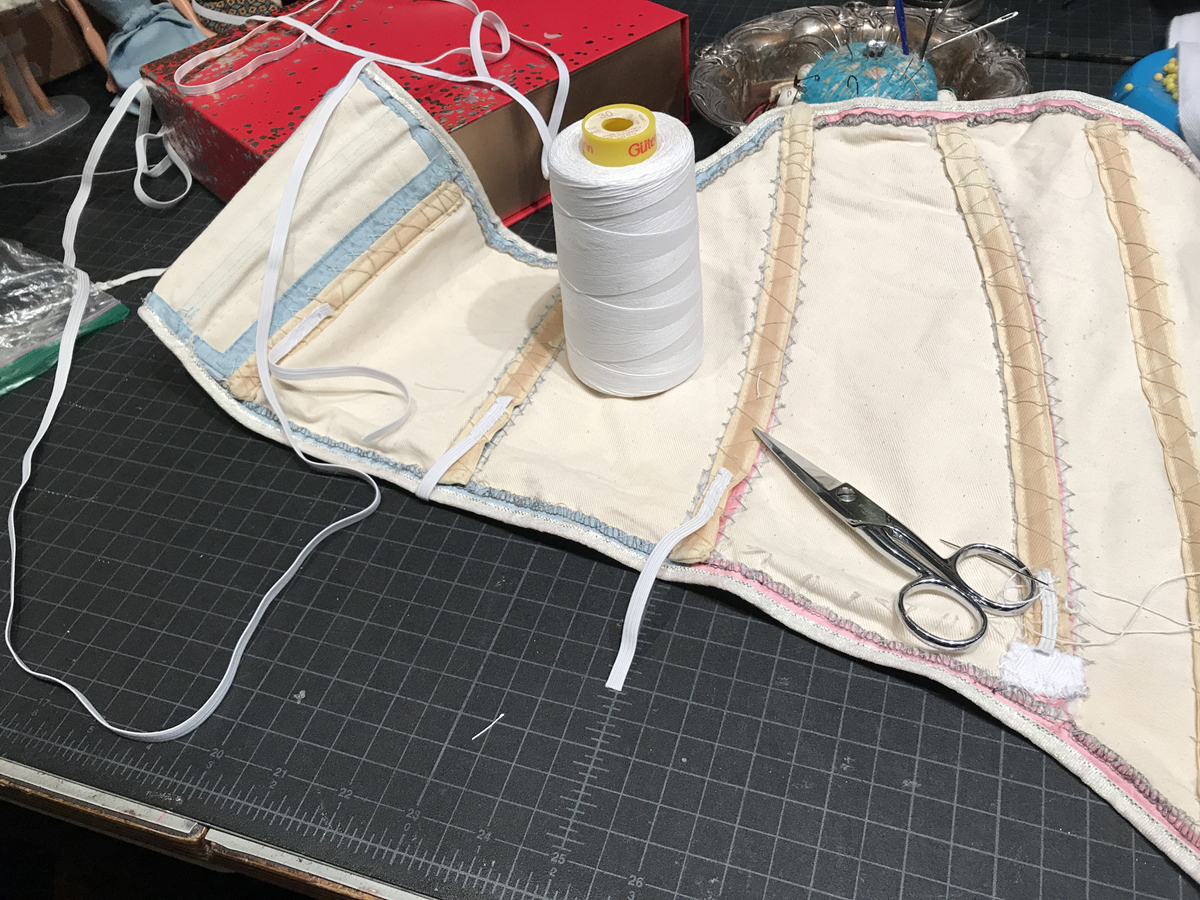
Re-creating the petticoat
The petticoat was missing, but there was another one from another of the dresses. I measured it and decided that duplicating it would give me the proper shape.
I chose for the foundation a coarse nylon net, what I refer to as “chain-link fence.” I needed it to be sheer but strong.
Since cutting out and sewing this foundation required more table space than I have in my studio, I cut and constructed it at the Fashion Institute of Technology in New York City, where I teach. The easiest way to sew nylon net is by stitching it to adding-machine tape. That’s what you see along the side seams in the photo below. The narrow paper is easy to pin the netting to, and it then tears easily and cleanly.
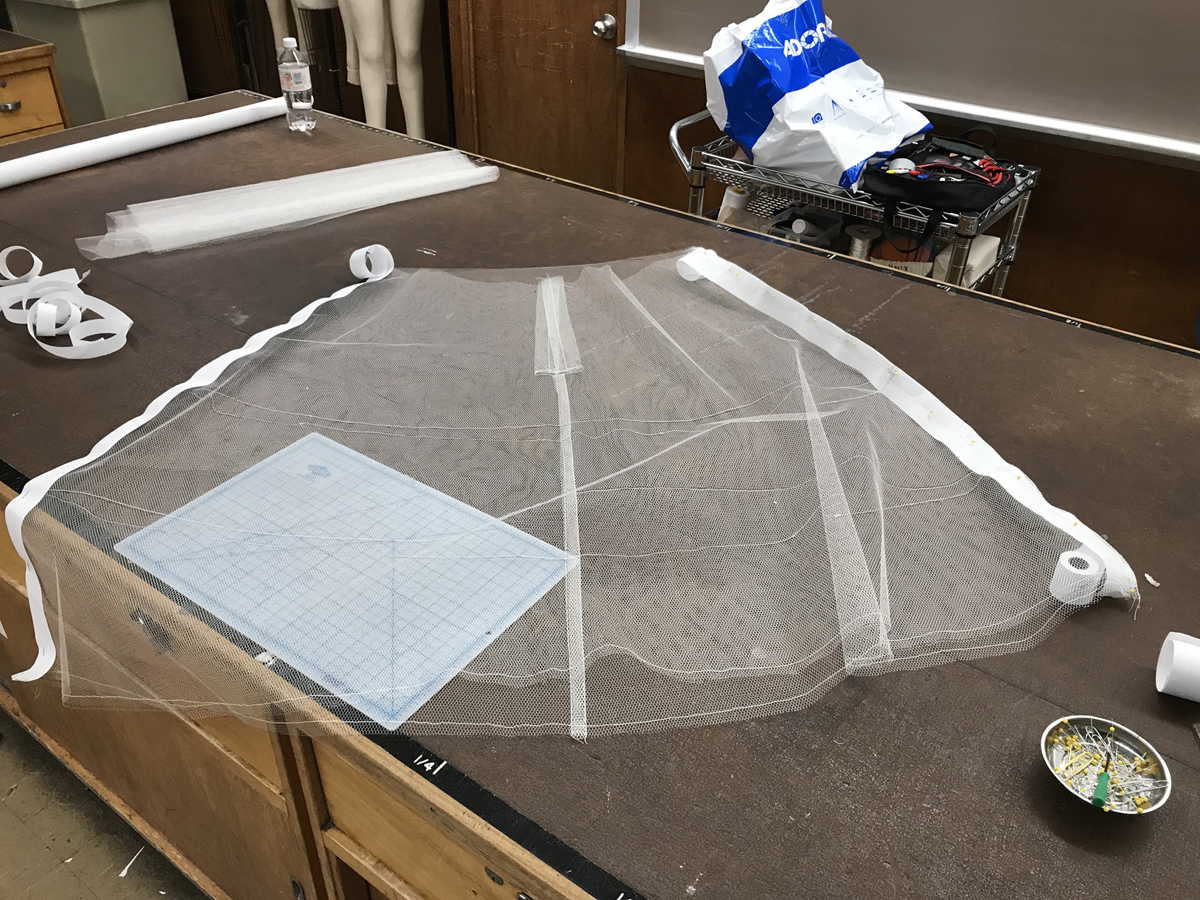
There’s a center-back opening. The horizontal lines of stitching were how I marked placement of where to sew the ruffles. The stitching lines were easy to see, and they stabilized the net where the ruffles would be attached.
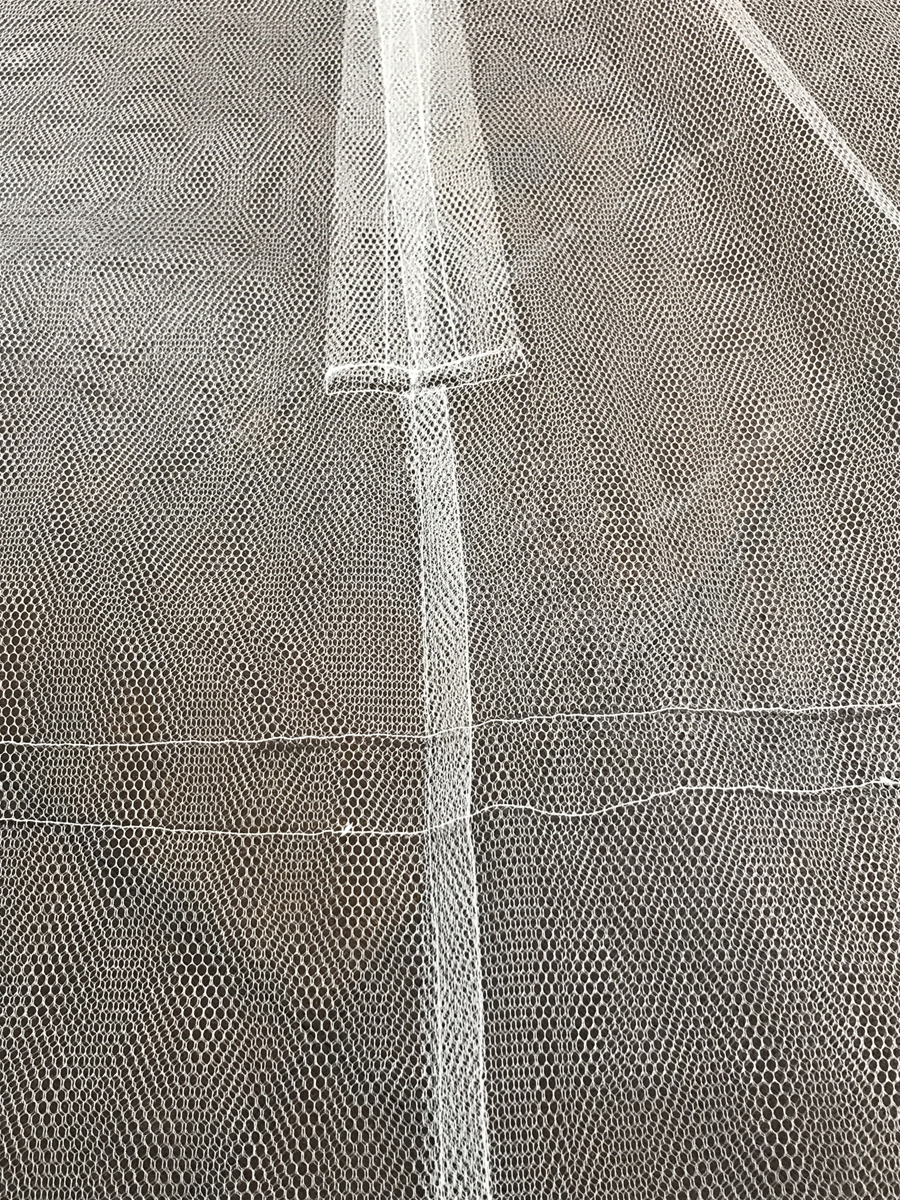
The waistband is a strip of hook-and-loop tape, so the waist can be adjusted.
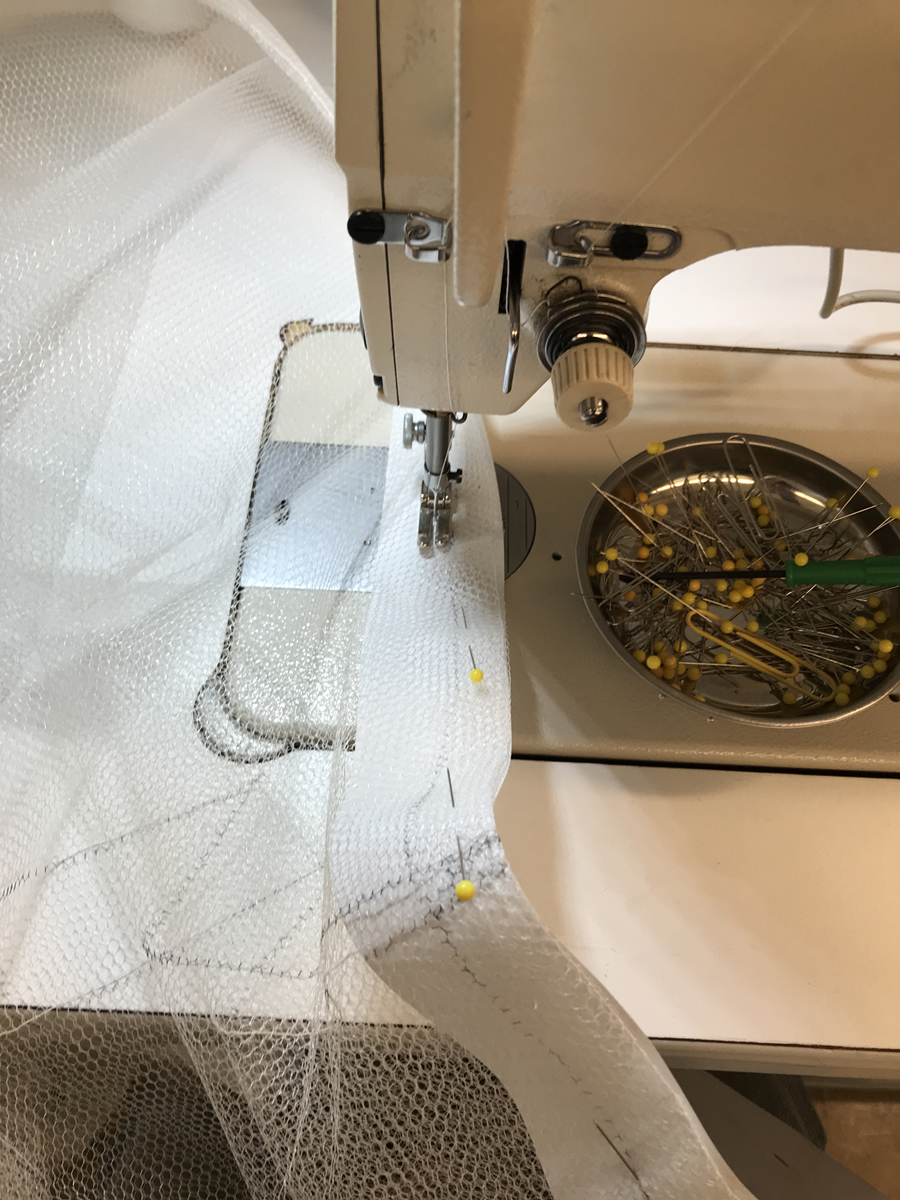
To determine how long the strips of tulle needed to be for the ruffles, I needed to make samples with my ruffler attachment. I experimented with the stitch length to gauge how much take-up I’d need. I decided on a 1.5-mm stitch length to get the proper gathers.
I also experimented with attaching the ruffle. I decided on a zigzag stitch, 5.0 mm wide and 2.75 mm long.
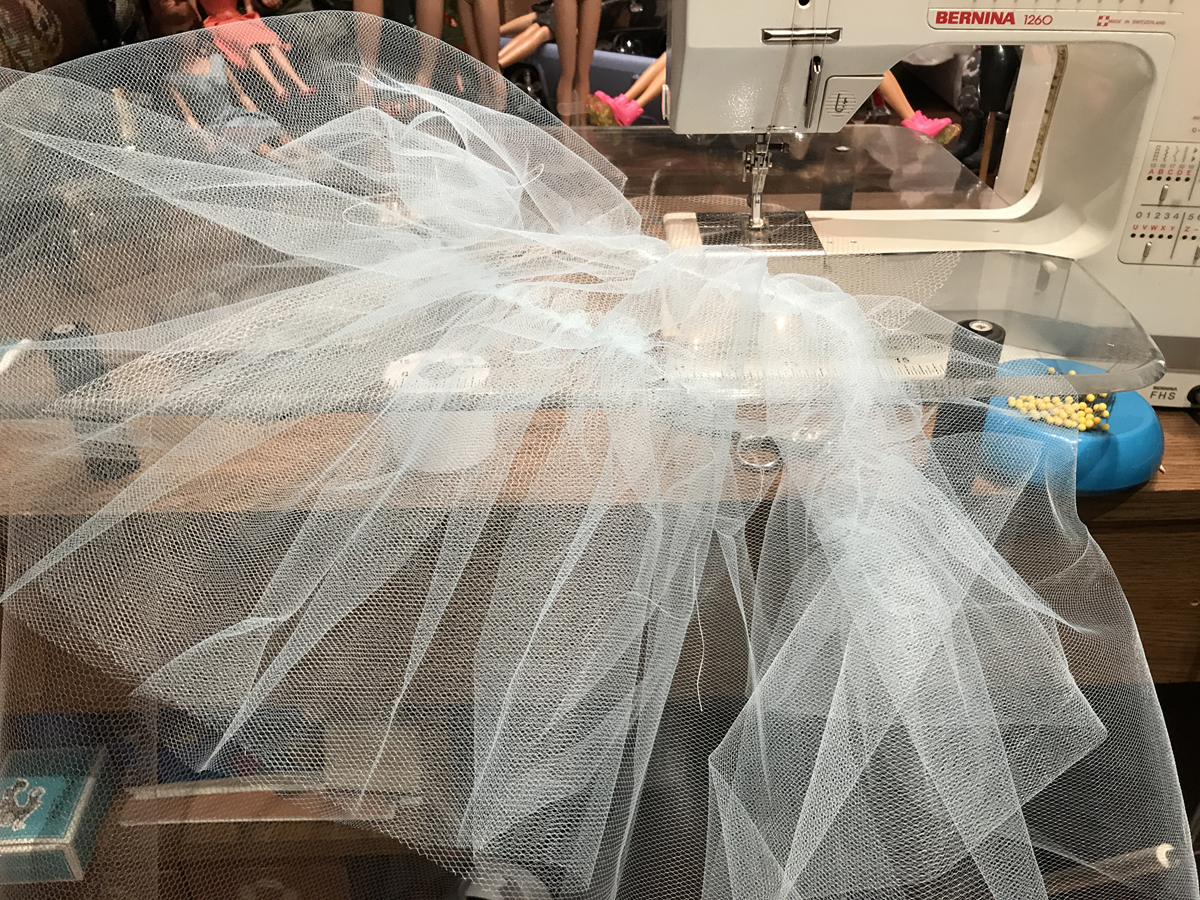
The lower portion of the skirt required first a 14-inch-deep ruffle, then two 12-inch-deep ruffles.
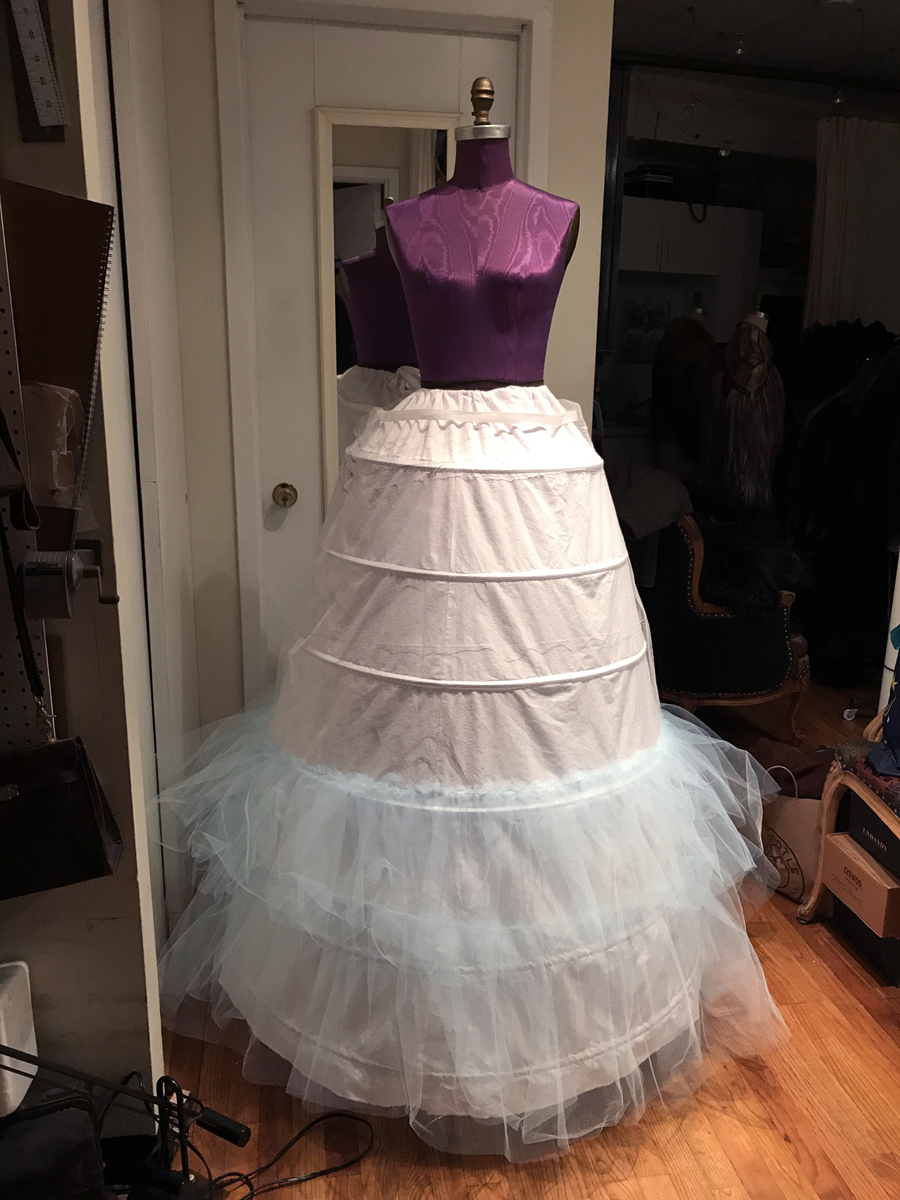
Near the waist, there were five layers of gathered net, 54 inches deep. This created the proper shape. Yardage used: 80 yards of tulle.
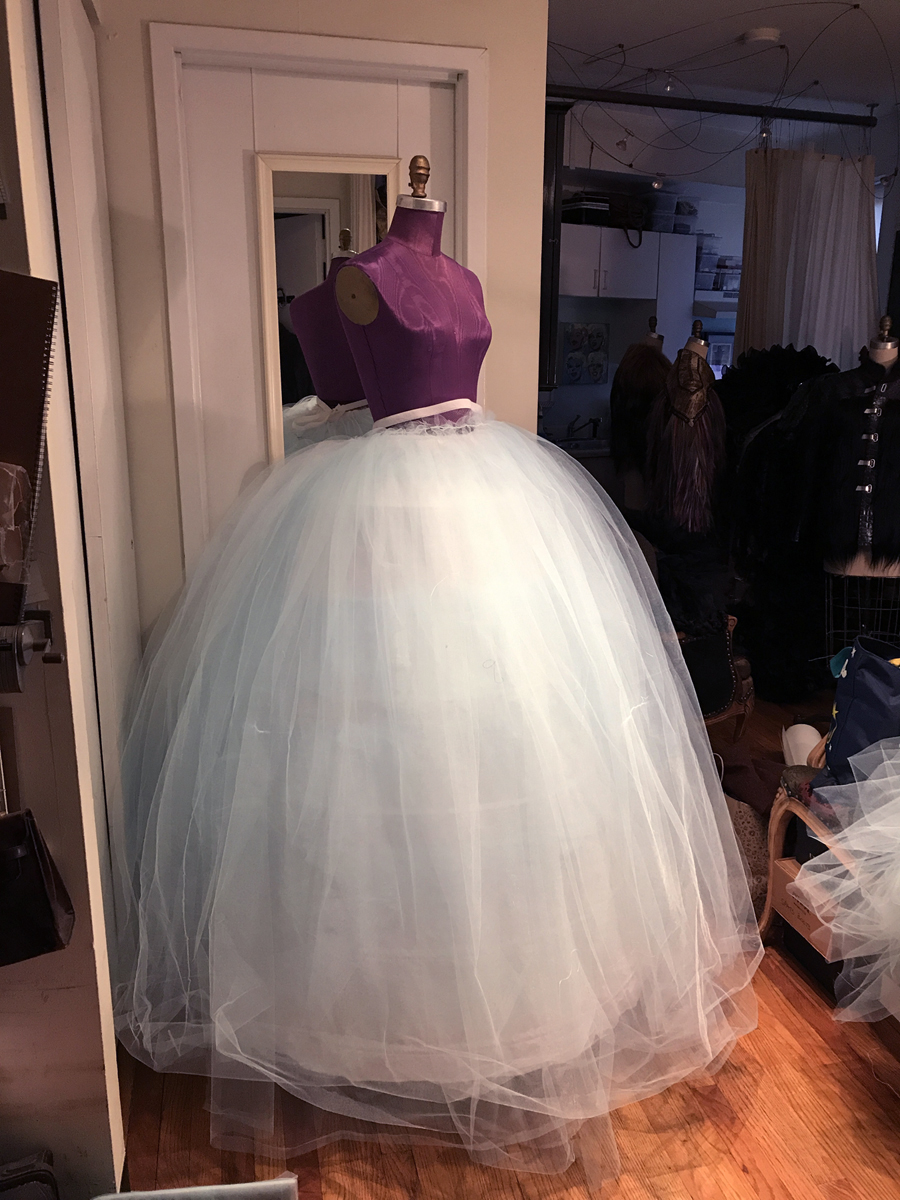
Finally, the dress goes over the finished hoops and petticoats.
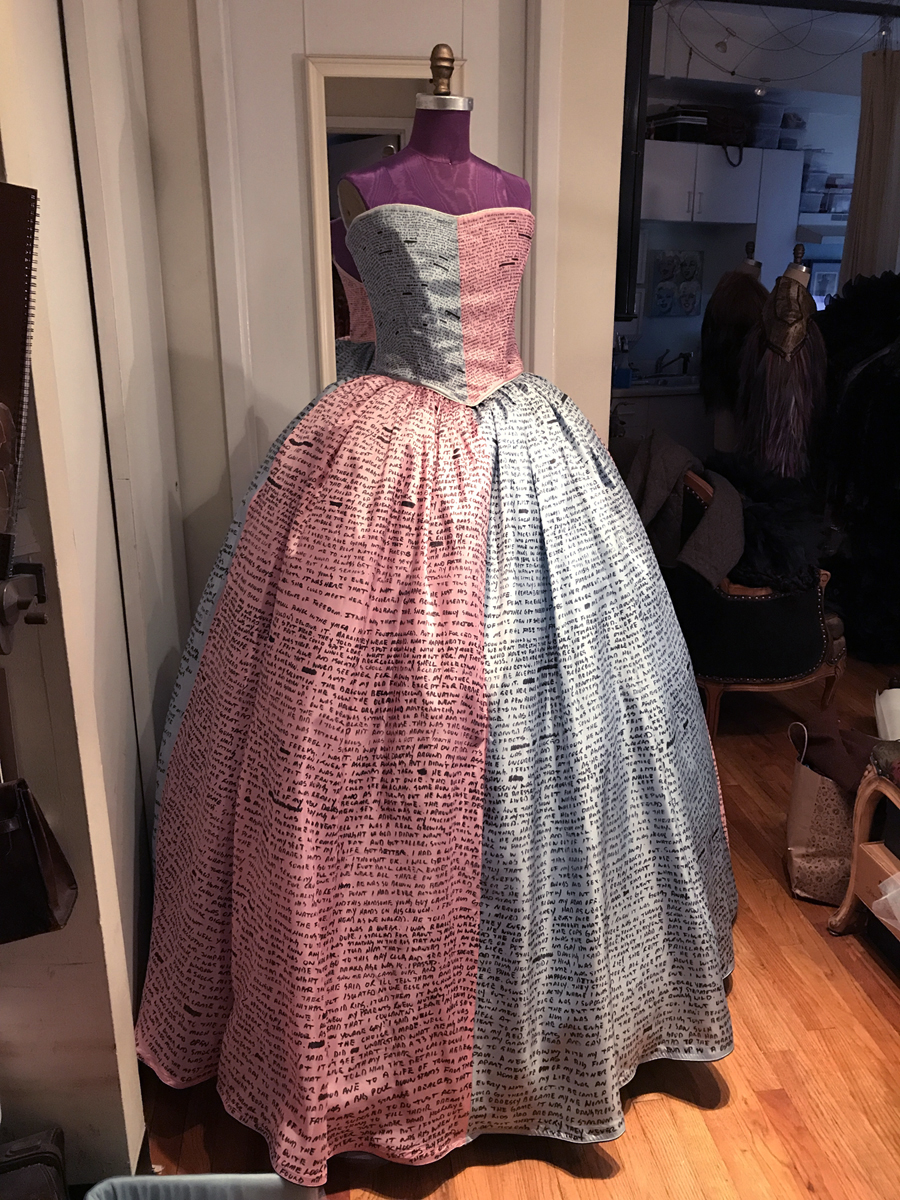
Hunter’s exhibition runs 6 p.m.–8 p.m. at the P.P.O.W. Gallery through December 21, 2019, at 535 West 22nd St, 3rd Floor, New York, 10011. You can see images from the show at this link.
I hope you join us there to see these significant pieces.
































The Love Dress is beautiful, BUT the model looks like anything but love unless you are into S&M. A hairy guy with a bag over his head and his hands tied do not represent love in my perspective. Love and pain do not have to go together. Otherwise, the dress is well done.
While I understand your comment, the model (who is the artist) is part of the statement. For him, love is pain. The writing on the gown is his story--it took five months to complete the writing. I didn't have time to read all of it, but understand the context of the entire presentation. This is a self-portrait of sorts. Perhaps you might read more about him, in the links in the article. Here's a link to his CV. https://www.ppowgallery.com/artist/hunter-reynolds/biography
Amazing work Kenneth. Wonderful to carry on the legacy of the artist and his work through your restoration of the dress. As uncomfortable as it can be for some to view such juxtaposing work, I could feel Hunter's intentions just from viewing the photograph. I'm sure it's quite moving in person.